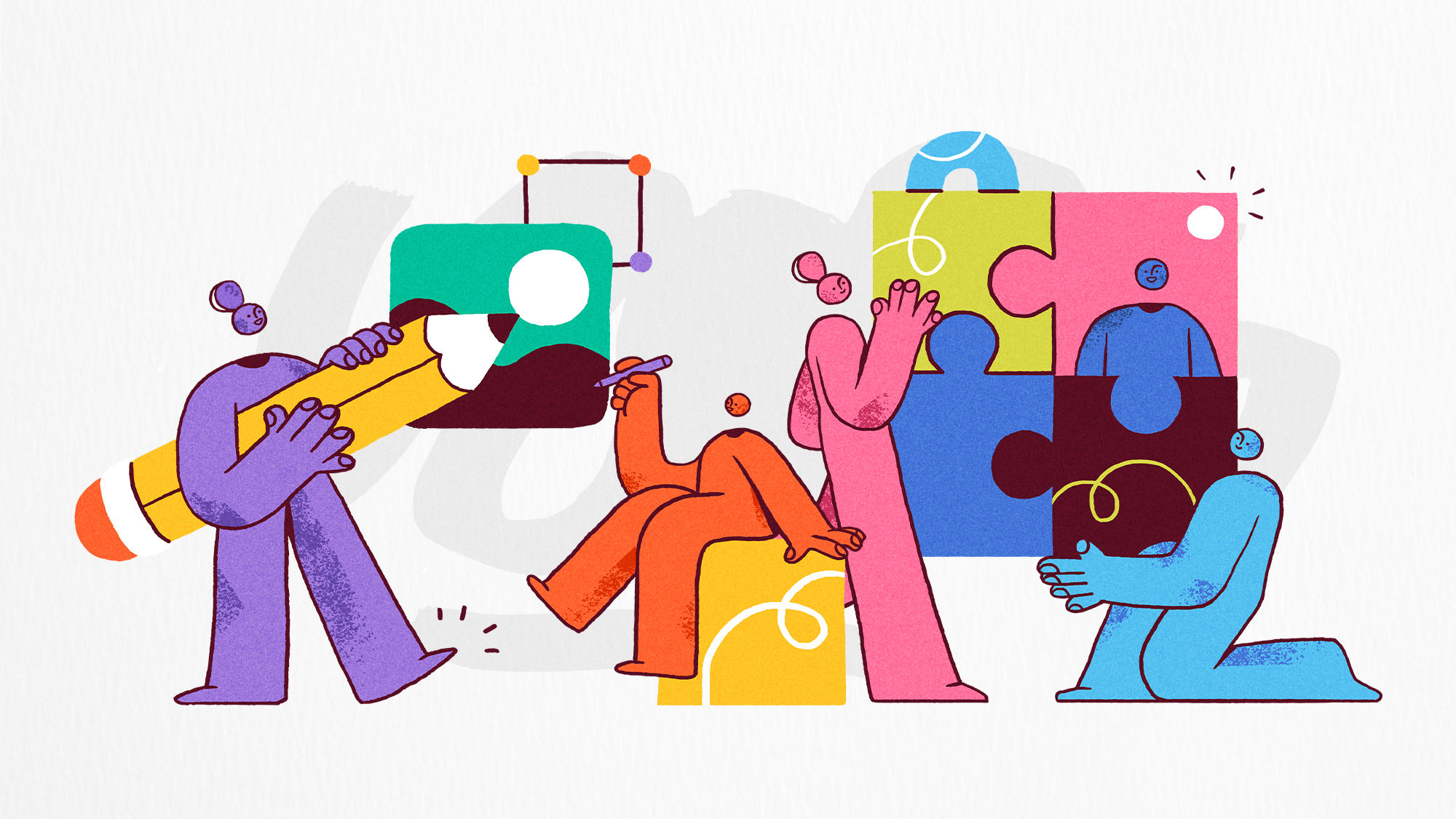As generative AI changes the way we live, work, and lead, one important question comes to mind: What makes human leadership so unique as to be irreplaceable?
Leaders across industries are realizing that technical skills are not enough. AI is speeding things up, accelerating processes, optimizing operations, and even coming close to simulating empathy and motivation. Yet, people still turn to other people for judgement, direction, and meaning, particularly in times of uncertainty and change. Leadership at its core is about humanity.
Of course, machines today do far more than crunch numbers. They can now write complex code, compose music, and communicate in natural-sounding language.AI systems are learning to reason and solve hard problems, mimic emotional sensitivity, and “act” like they care about people, demonstrate social interest, and even inspire and motivate users through personalized, humanlike interactions.
But even though these systems are powerful and useful, they still fall short in areas that are foundational to leadership. Instinct, intuition, imagination, integrity, and identity—these five human traits are not just soft skills. Rather, they are deeply strategic, irreplaceable skills that shape meaning, build trust, and drive transformation in ways no algorithm can match.
In a world increasingly augmented by machines, these qualities are not nostalgic, they are essential. As technology does more of the thinking for us, the role of leaders changes from managing complexity to building relations, making connections. We aren’t faster or more accurate than machines, but we do have the ability to genuinely empathize, see nuance, and to identify when we need more data to make a decision. The five traits below show what makes us unique as humans and leaders.
Instinct: Fast Judgment Rooted in Human Experience
Instinct is our capacity for immediate response thanks to millions of years of evolution behind us and a continuous lived experience.AI waits for input and makes calculations based on past data. Human instinct, on the other hand, surfaces in real time when there is stress, ambiguity, and emotion.
MIT cognitive scientist Josh Tenenbaum describes human intelligence as a kind of “probabilistic inference engine,” one that learns from dynamic, real-world interaction – not from static datasets.
Example skill: Quickly reacting to threats. Leaders who trust their gut can deal with new emergent threats or problems without overanalyzing them. This could mean stepping into a crisis, calming a team in chaos, or quickly protecting someone’s dignity in a tense exchange. The amygdala, which is the part of the brain that detects threats, is often where this physical response comes from. When someone is under acute stress, the amygdala can trigger what psychologists have termed an “amygdala hijack” – a fast, primal reaction designed for survival. This typically activates the body’s fight, flight, or freeze response, which lets you react right away – before your rational brain has time to fully process the situation.
Instinct can’t be programmed because it comes from a mix of lived context and emotions, social cues and personal moral awareness. Experienced leaders often know instinctively when they need to intervene, de-escalate, or take a stand. This is a sensitivity that allows them to present in situations and to deliver quick – and thoughtful – decisions when analysis might only make this take longer or complicated matters even further.
Intuition: Pattern Recognition Beyond Data
People often mistake intuition as guesswork. In reality, it’s one of the most sophisticated forms of human intelligence, combining experience, emotional insight, and context-sensitive judgment. It works where logic and data fall short. In fact, gut intuition and data must work as partners to enable leaders to make better decisions in fast-moving environments.
Example skill: Situational awareness. Leaders with strong instincts can read the room intuitively – they can tell when there is tension before it gets worse, or when to pause, push, or pivot. They anticipate emotional reactions, can pick up on what people are not saying, and lead through ambiguity with human-centered judgment.
Intuition works by recognizing patterns that go beyond numbers. It draws on tacit knowledge that comes from making mistakes, thinking about and learning from them and improving on them over time. Neuroscientist Antonio Damasio’s somatic marker hypothesis suggests that our brains are continuously integrating emotional and cognitive signals, whether we are conscious or not. These marker signals are subtle body and emotional cues that help us evaluate situations quickly. When leaders feel like something is “off,” it may be because these internal cues have registered small shifts in tone, timing, or behavior.
Intuition can be strengthened through mindful practices such as journaling, meditation, and talking to trusted peers. These habits, especially when practiced consistently, can help leaders deal with the complexity that often comes at them every day, in a more holistic rather than analytical way. They can train themselves to notice patterns even before they show up as data.
Imagination: Creating What Doesn’t Yet Exist
AI can mimic and remix – but it cannot imagine. Imagination is the ability to generate novel ideas, envision future states, and dream beyond present limitations.
In their seminal Harvard Business Review article, Linda Hill and colleagues describe imagination as central to innovation, noting that the most successful organizations harness collective creativity to solve unsolved problems.
Example skill: Visionary thinking. From Martin Luther King Jr.’s “I Have a Dream” speech to tech leaders who envision life on Mars, can use their imagination to come up with and explain big, bold ideas for the future, and then inspire others to follow them.
Imagination is what allows humans to see opportunity where none seems to exist. It lets us combine ideas that don’t seem likely, to ask “what if” and see problems as opportunities. Imagination precedes innovation because it is not beholden to guardrails, particularly those that demand measurable or efficient outcomes. Organizations that nurture imagination do so by creating an environment of psychological safety, and rewarding curiosity, alongside performance.
Leaders who model imaginative thinking invite others to think expansively – “out of the box” as it is so often called. They use uncertainty as an opportunity to practice creativity.
Integrity: Acting from a Moral Core
Honesty is just one part of integrity. It’s the alignment of action with values – even when no one is watching. AI may follow instructions, but only humans carry moral responsibility. According to Harvard Business School’s Joseph Badaracco, ethical leadership is shown not in grand, flashy gestures but in the quiet, daily choices. These moments define culture, trust, and credibility and reflect a leader’s true character.
Example skill: Ethical reasoning. Leaders with integrity think about the long-term effects of their choices, consult values – not just metrics – and take public responsibility for their actions.
In the age of AI, integrity takes on new meaning. As companies increasingly rely on automated systems to allocate resources, assess talent, and make predictions, leaders must ensure that those systems are in line with the company’s values. Machines may be able to execute perfectly but they lack a moral compass. It is up to people to put fairness, accountability, and empathy into practice.
Integrity requires self-scrutiny. It’s about asking not just what’s possible (“Can we?”) but what’s right (“Should we?”) – and building cultures where people can questions decisions openly.
Identity: The Human Story Behind the Role
Identity is more than a job title or profile – it’s the evolving story of who we are, shaped by experience, values, culture, and community. AI has no identity. It doesn’t feel or suffer, aspire or grow. Author Sherry Turkle warns against conflating machine interaction with human connection, arguing that digital tools can erode empathy and authenticity if they replace – rather than support – real conversation.
Example skill: Self-awareness. Leaders grounded in identity reflect on their values, acknowledge their biases, and act with clarity about who they are and what they stand for. This authenticity builds loyalty, trust, and influence.
A grounded sense of identity helps leaders stay consistent amid technological and organizational change. When roles evolve or automation redefines work, those who lead from self-knowledge – not title or ego – project stability and coherence. Their sense of purpose becomes contagious, guiding others through disruption.
Moreover, identity connects leadership to inclusion. Recognizing one’s own story fosters empathy for others’ experiences, allowing leaders to create spaces where people feel seen and valued. In a digital world that prizes efficiency, identity reintroduces humanity into systems that might otherwise feel impersonal.
Only humans can decide what matters.
As AI capabilities grow, the key leadership question isn’t what machines can do—but what only humans must do. Instinct, intuition, imagination, integrity, and identity are not abstract ideals. They are strategic leadership capacities – essential for navigating uncertainty, inspiring trust, and creating meaningful impact.
These five traits are not nostalgic or defensive – they are the foundation of adaptive leadership in an age defined by acceleration. As algorithms advance, human leaders will increasingly be measured not by what they automate but by what they awaken: trust, creativity, and moral clarity.
The smartest machines will keep learning faster. But only humans can decide what matters – what to optimize, what to preserve, what to challenge. The leaders who remember that won’t just adapt to the future of AI; they will define it.
© IE Insights.











